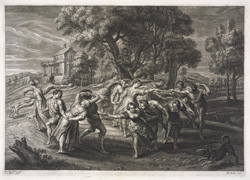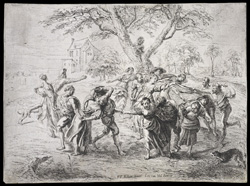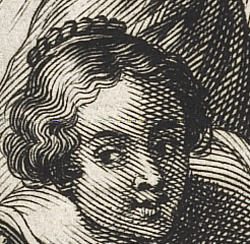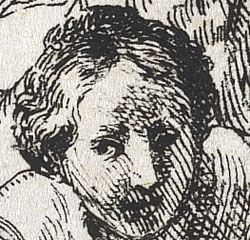 |
When reproducing his images in print, Rubens preferred the precise lines and patterns of an engraving (see image below, left) over the fluid, thin lines of an etching (see image below, right). Thus, the sketchy, impressionistic etching on the right, created after his death, would not have appealed to Rubens. |
 |


Dance of the Italian Peasants, Schelte Bolswert (after Peter Paul Rubens), about 1638–1645 |
 |


Dance of the Italian Peasants, Leo van Heil (after Peter Paul Rubens), after 1640 |
 |
Engraving
To create an engraving (below, left), the artist cuts grooves into the metal plate by hand, using a sharp metal tool called a burin. Because the artist cuts the lines manually, he can carefully control their depth and quality, and create more regular lines and patterns than in an etching.
Etching
To create an etching (below, right), an artist coats a metal plate with an acid-resistant material and scratches a design into the material with a stylus to expose the metal. He then places the metal plate into a bath of acid, which bites into the exposed metal. With this method, the artist can draw very fine, fluid lines that imitate drawing. However, the artist doesn't have complete control over the acid, which can cut into the metal unevenly, and results in a sketchy, impressionistic line.
|
 |

Engraving: The artist uses a metal tool to cut lines into a metal printing plate
Detail of Schelte Bolswert's Dance of the Italian Peasants, after Rubens
|
 |

Etching: The artist uses acid to cut the lines into a metal printing plate
Detail of Leo van Heil's Dance of the Italian Peasants, after Rubens
|
|
 |